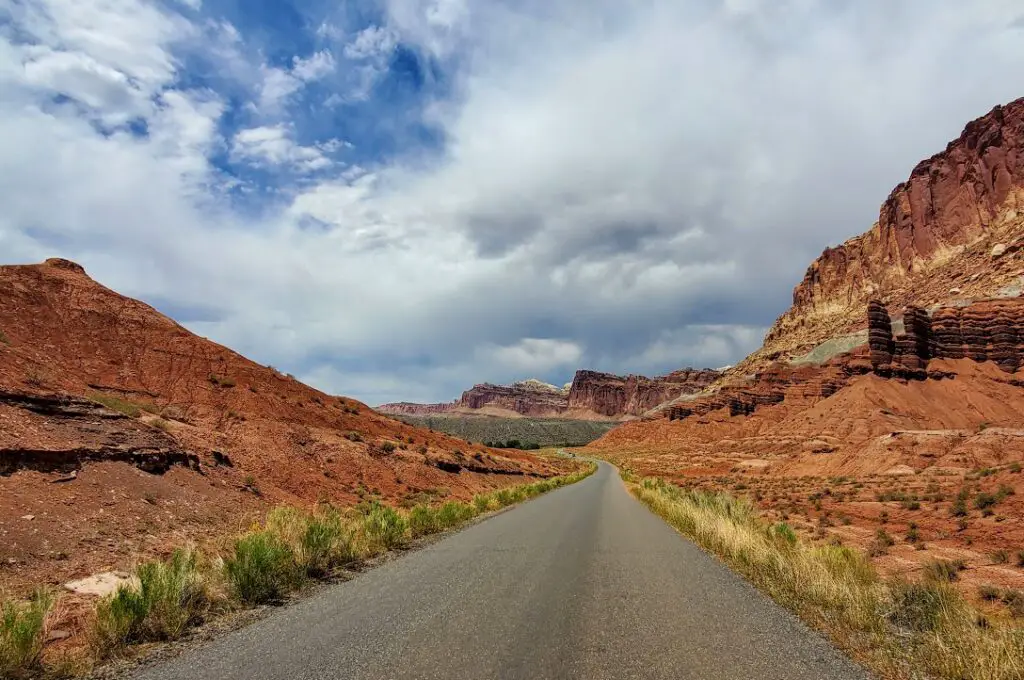
What is the National Park Passport?
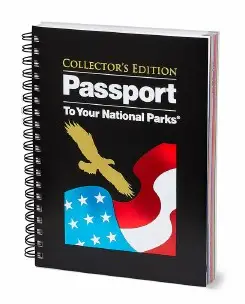
The National Park Passport was created by the non-profit company: America’s National Parks. A portion of the proceeds from their programs and products goes directly to the NPS, which supports educational programs and preservation projects in the parks.
There are a few different versions, all varying in size. The Collector’s Edition has a spot for every single National Park stamp and sticker, and extra pages in the back for any bonus stamps each park might offer. Then there is a pocket-sized passport, which probably is the most popular due to it being easy to carry around.
How is the passport organized?
All 424 National Parks are split into 9 regions. Each region is designated a color that matches the stamps you can get at every park. Also, every year there is a sheet of stickers released – one from each region (also color-coded) and then one “National” stamp. Eventually, every National Park will have a sticker; however, not all of them do yet because there are more parks than years the passport has been around.
I’ll break down what states are in each region and how it’s organized in the passport. Click through my site to see detailed information on each region/state and all of the individual park reviews. If I haven’t been to any parks in a region or state I’ll mention it, but it won’t be linked to anything. I’ll go in order of the regions I’m most familiar with.
Which passport is best for me?
There are two passports: one large book that lists every single National Park site and includes a designated spot for each stamp (pictured above), and a small pocket-sized book.
I have the large book because I have a lifetime goal of visiting every single park. The smaller one only has a few pages for each region, so if you want to go to every park you won’t have enough room for all the stamps. When I bought the passport I wanted to go all in and not have to worry about having enough space.
The pocket sized passport is perfect for people that only go to parks when they are near them – they can just leave it in their car. Or maybe they don’t care about seeing every single park and getting every stamp.
Pros & Cons of each Passport
Having to carry that big book around is annoying. If I have my car I usually go in and get the stamp and then take it back out. If I don’t have my car (like when I went to NYC in the fall of 2021), I have to keep it in my backpack and it takes up a lot of room. I also have to be mindful of if it might get wet and put it in a plastic bag. If I fly somewhere I always make sure it comes in my personal item because I don’t want to risk it being in my luggage and it getting lost. Again, that takes up a lot of room.
The stickers are fun to collect, but it’s not cheap. Each sheet of stickers is almost $6 and there are 36 years worth of stickers. I’m not in a rush to get all the stickers for all the parks I’ve been to, so I slowly pick up sheets as I go on trips. Side note: I personally only put the sticker in the book if I’ve been to the park. The others I keep in a little zipper pouch I got from a park gift shop.
Overall, the passport is a really fun hobby and I learn so much from visiting all of the parks. It’s not free, but I can think of more expensive hobbies. Filling in my stamps and stickers feels like a puzzle, and it’s always interesting to see which parks I get to each year.
Mid-Atlantic Region
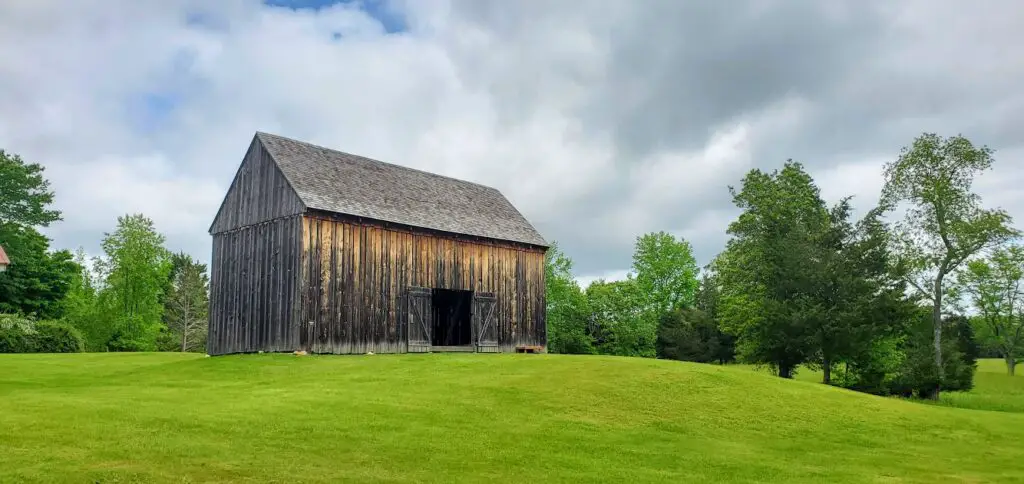
The Mid-Atlantic Region is where I live! Although, I have been to almost as many sites in the Western Region as I have in the Mid-Atlantic. However, I’m definitely not as familiar with the cities and don’t have as many tips and tricks for visiting.
The Mid-Atlantic Region has 56 total park sites; 2 major National Parks and 54 smaller units. In the passport, the Mid-Atlantic Region was given light blue as its color. Some of the popular destinations of the Mid-Atlantic Region include Shenandoah NP, New River Gorge NP, Gettysburg, and Fort McHenry.
Delaware – 1 site
Maryland – 13 sites
New Jersey – 5 sites
Pennsylvania – 15 sites
Virginia – 17 sites
West Virginia – 5 sites
National Capital Region

Washington D.C. is my one of my favorite cities. It’s close to me and almost everything there is to do is free. The museums are huge and you can visit them multiple times and see something new every time.
There are 24 National Park sites in the National Capital Region. Here’s a little bit more of a specific breakdown:
- 4 are parks
- 5 are houses/buildings available to tour
- 10 are stand alone memorials
- The others are roads/trails or in a miscellaneous category
The National Capital Region was given red as its color in the passport.
Western Region
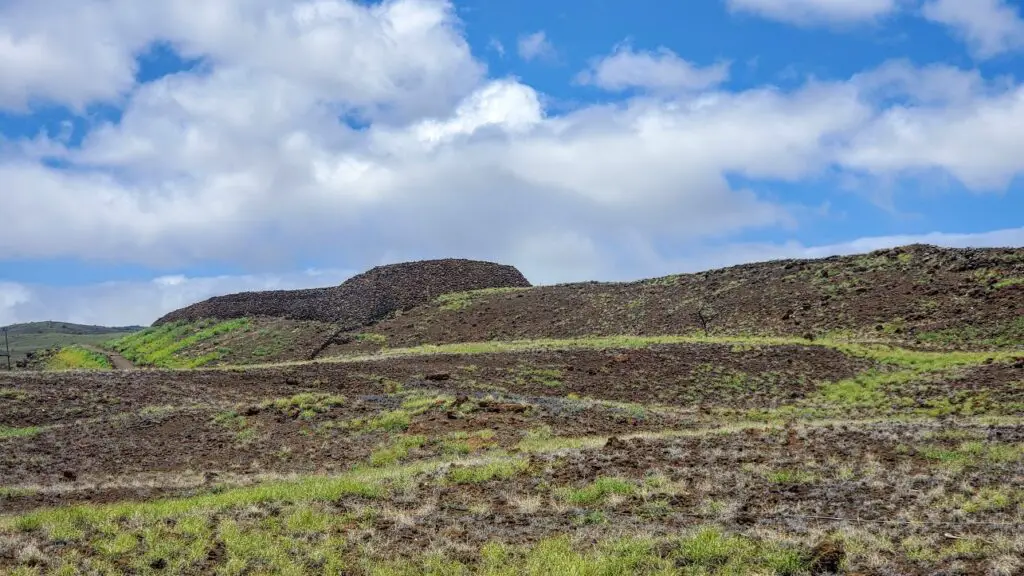
There are 15 major National Parks and 46 smaller park sites in the Western Region. It contains granddaddy parks like the Grand Canyon, Yosemite, and Hawaii Volcanoes. I’ve been out that way twice and was able to see a good many parks on both trips. Obviously nothing is guaranteed, but I think my next few trips will be out west. In the passport, the Western Region was given green as their color.
American Samoa – 1 site
Arizona – 21 sites
California – 27 sites
Guam – 1 site
Hawaii – 8 sites
Nevada – 3 sites
Southeast Region
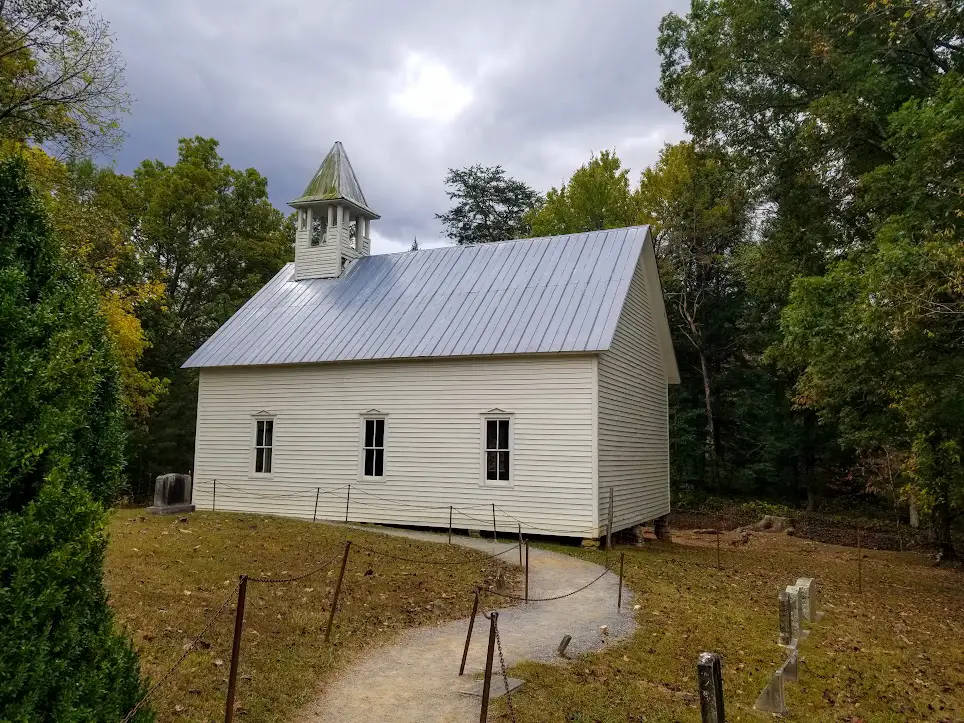
There are 70 park sites in the Southeast Region. Of the 70 parks, 7 of them are major National Parks. The Southeast has big name parks like the Smoky Mountains, the Everglades, and Dry Tortugas National Park. The Southeast Region in the passport is purple.
Alabama – 7 sites
Florida – 11 sites
Georgia – 10 sites
Kentucky – 5 sites
Mississippi – 8 sites
North Carolina – 8 sites
Puerto Rico – 1 site
South Carolina – 7 sites
Tennessee – 8 sites
Virgin Islands – 5 sites
North Atlantic Region
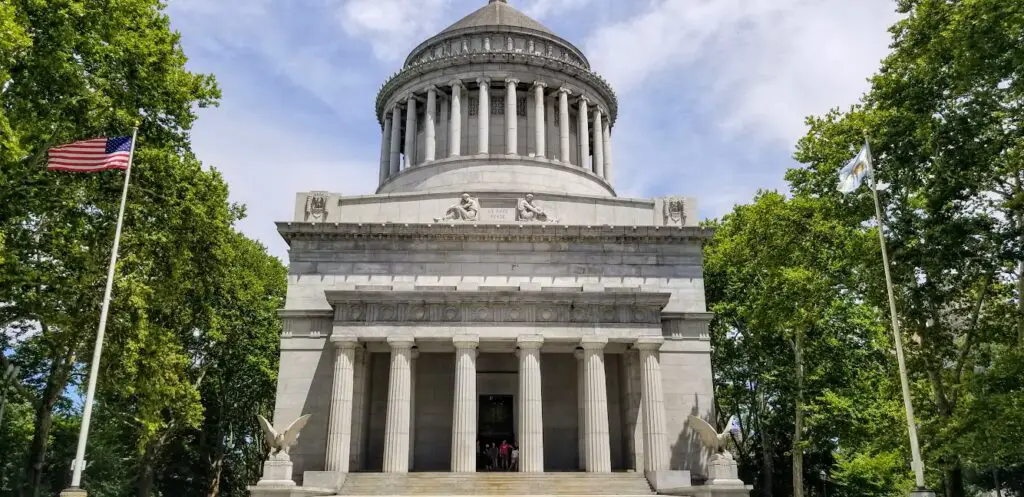
The North Atlantic Region has 44 park sites and only one of those is a major park – Acadia. Other popular destinations in this region are the Statue of Liberty, Federal Hall, and Cape Cod NS. The color the region was given in the passport is a burnt orange.
Connecticut – 1 site
Maine – 3 sites
Massachusetts – 15 sites
New Hampshire – 1 site
New York – 22 sites
Rhode Island – 1 site
Vermont – 1 site
Rocky Mountain Region

There are 42 park sites in the Rocky Mountain Region, including 13 big name parks like Yellowstone, Grand Teton, Glacier, Utah’s Mighty 5, and Rocky Mountain National Park. Along with California, this region has a majority of the most famous parks. The Rocky Mountain Region’s designated color is yellow.
Colorado – 12 sites
Montana – 4 sites
North Dakota – 3 sites
South Dakota – 5 sites
Utah – 11 sites
Wyoming – 6 sites
Midwest Region
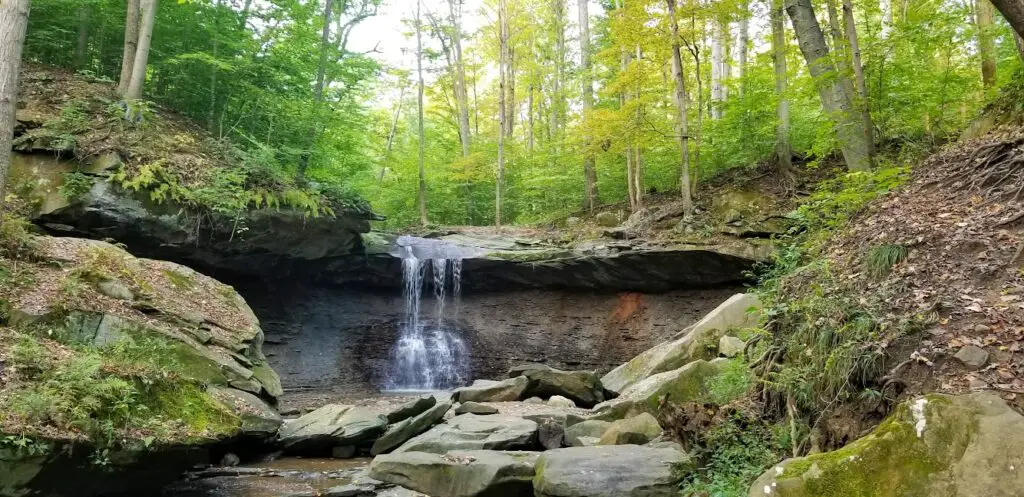
Even though there are 10 states in the Midwest Region, there are only 44 park sites. However, 4 of those are major National Parks. Some popular destinations in the Midwest are Cuyahoga Valley NP, Isle Royale NP, and Apostle Islands NS. The Midwest Region is orange in the passport.
Illinois – 3 sites
Indiana – 3 sites
Iowa – 2 sites
Kansas – 5 sites
Michigan – 5 sites
Minnesota – 4 sites
Missouri – 7 sites
Nebraska – 5 sites
Ohio – 8 sites
Wisconsin – 2 sites
Southwest Region
The Southwest Region also has 42 National Park sites, but only spread out over 5 states. Texas and New Mexico hold the majority of them, with popular destinations such as White Sands NP, Carlsbad Caverns NP, and Big Bend NP. Grey was given to the Southwest Region as its color.
Arkansas – 7 sites
Louisiana – 4 sites
New Mexico – 15 sites
Oklahoma – 2 sites
Texas – 14 sites
Pacific Northwest & Alaska Region
The Pacific Northwest & Alaska Region has 37 parks including 11 major parks. It holds big name parks in Alaska like Kenai Fjords and Denali, and also Mount Rainier and Olympic in Washington. It was given blue as its color in the passport.
Alaska – 16 sites
Idaho – 5 sites
Oregon – 4 sites
Washington – 12 sites
Last Updated: July 13, 2023
Leave a Reply